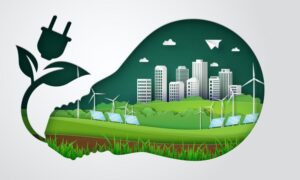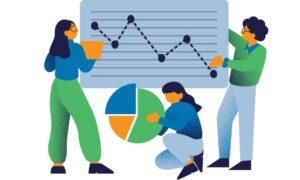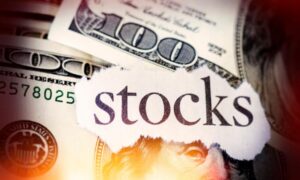Will the Fed Ease on Its Rate Cuts After Recent Rise in Inflation?

As 2025 unfolds, the Federal Reserve finds itself navigating a challenging landscape, one where the economic signals are mixed, and crucial decisions lie ahead. The biggest question on everyone’s mind: Will the Fed ease its stance on rate cuts after the recent uptick in inflation?
After an aggressive series of rate hikes in the past couple of years, aimed at combating soaring inflation, the central bank has recently slowed its tightening policy. But with inflation creeping up again in recent months, policymakers are caught in a delicate balancing act: they must decide whether to stay the course with rate cuts or revert to tightening further to maintain price stability.
The Inflation Upsurge: A Bump in the Road
In late 2024, inflation saw an unexpected spike, defying the Federal Reserve’s expectations. While many anticipated inflation to remain subdued after months of higher rates, several factors, including supply chain disruptions and stronger-than-expected consumer demand, contributed to the renewed price pressures. The recent inflation numbers were higher than anticipated, raising concerns about a potential setback in the Fed’s battle against inflation.
Though inflation remains well below its peak in 2022, the uptick complicates the Fed’s decision-making process. Will it hold off on further rate cuts to avoid letting inflation spiral? Or will it consider a more dovish approach to support a slowing economy?
The Case for Continued Rate Cuts
The Federal Reserve faces significant economic headwinds that might justify easing its rate cuts, even in the face of rising inflation. Here’s why:
Slowdown in Economic Growth: Despite inflationary pressures, the broader economy has shown signs of slowing down. Higher rates have already dampened consumer spending, housing activity, and business investments, which in turn could stifle overall growth. The Fed must weigh the risk of pushing the economy into a deeper recession by continuing with aggressive rate cuts.
Labor Market Trends: While unemployment remains low, job growth has started to decelerate, and wage inflation appears to be leveling off. The labor market’s resilience is a positive sign, but it could be strained under tighter financial conditions. Rate cuts could provide a much-needed boost to business investments and hiring, keeping the economy on track.
Global Factors: The global economic landscape could also influence the Fed’s decision. If inflation is driven by global supply chain issues or geopolitical tensions, the Fed might opt for caution on rate hikes, as these factors are harder to control with domestic monetary policy alone.
The Case for Tighter Monetary Policy
However, there are strong arguments for the Fed to remain vigilant and continue tightening policy, especially with inflation still above its 2% target:
Inflationary Pressures: While the rise in inflation is not as severe as during the pandemic’s peak, any uptick could signal a persistent inflationary environment. With inflationary expectations often self-reinforcing, the Fed may be wary of loosening its grip on rates too soon, fearing that inflation could become entrenched.
The Impact on Consumer Sentiment: Even a modest rise in inflation could dampen consumer confidence, leading to reduced spending, particularly in areas like housing and durable goods. The Fed could see this as a signal to remain firm in its approach, despite the rising costs of borrowing.
Long-Term Stability: By keeping rates higher for a longer period, the Fed might want to avoid a repeat of the 1970s-era stagflation, when both inflation and unemployment spiked simultaneously. The lessons from history are not lost on policymakers, and this caution could drive them to prioritize long-term economic stability over short-term growth.
So, What’s Next for the Fed?
The Fed’s actions will largely depend on how inflation trends in the coming months. If inflation continues to climb unexpectedly, the central bank may hesitate to ease its rate cuts, or it could even reconsider raising rates again. On the other hand, if inflation proves transitory and the economy shows signs of slowing too much, the Fed may decide to pivot, offering relief through rate cuts to prevent a recession.
The challenge, however, lies in timing and communication. The Fed must not only consider economic data but also manage market expectations, ensuring that its moves do not trigger undue volatility. Recent signals from Fed officials suggest a cautious optimism: while they’re prepared to act if inflation continues to rise, they’re also mindful of the importance of fostering economic stability without stifling growth.
Conclusion: A Delicate Balance Ahead
Ultimately, the Federal Reserve faces a complex task: balancing inflation control with economic growth. The recent rise in inflation complicates an already tricky decision-making process, but it doesn’t necessarily mean that the Fed will halt its rate cuts altogether. Much will depend on whether the inflation uptick is persistent or transitory, and whether other economic indicators suggest further tightening is needed.
For investors, consumers, and businesses alike, the outlook remains uncertain. However, one thing is clear: the Fed’s actions will be a key driver of economic performance in the coming year. As the data continues to roll in, all eyes will remain on the Fed’s next moves, with the future of the U.S. economy hanging in the balance.
Grab Your FREE Report on Top 5 Stocks to Buy in 2024
Disclaimer:The information provided on this website is for read-only purposes and is intended to give an idea for investment to whomever reads it. It should not be considered as financial advice or a recommendation to invest. Due diligence is not a luxury, it is a basic need.














